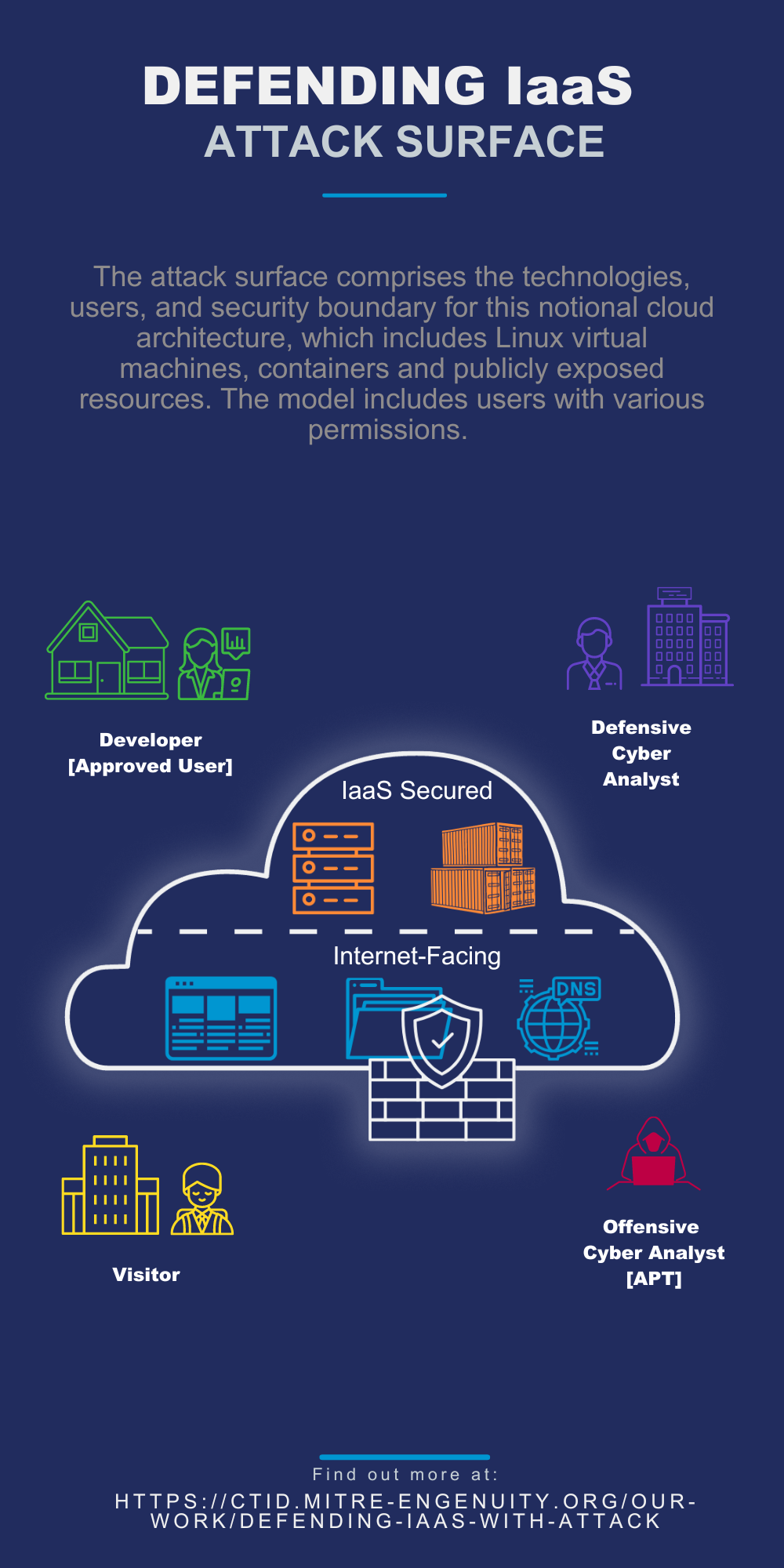Overview
Defending IaaS with ATT&CK delivers a custom collection of MITRE ATT&CK® techniques that is tailored to the attack surface and threat model of a Linux-based, infrastructure-as-a-service (IaaS) environment. The project provides a notional architecture for this target environment and a machine-readable collection of ATT&CK techniques that can be used to plan and evaluate security controls.
Every organization is unique, and even within an organization there may be a variety of technical architectures. The collection delivered by this project targets a very specific technical architecture, but the project methodology describes the process for organization to create their own collections of techniques that are tailored to their exact needs and circumstances.
Background
MITRE ATT&CK® is a globally accessible knowledge base of cyber adversary tactics and techniques based on public reporting and observation. The ATT&CK knowledge base represents adversary goals as tactics and specific goal-oriented behaviors as techniques and sub-techniques. This project leverages the knowledge base and its underlying data model to produce a collection of ATT&CK techniques that is tailored to a Linux IaaS cloud architecture.

Click to view full size.
Initially, ATT&CK was focused on the Windows enterprise environment. Later versions integrated macOS and Linux into what is commonly known as “ATT&CK for Enterprise”. With broader adoption and numerous contributions from the cybersecurity community, ATT&CK eventually added Mobile and ICS technology domains.
A typical information system spans multiple platforms (e.g. Linux and Microsoft Azure) and even spans technology domains (e.g. Enterprise and Mobile). These complex information systems require cyber defenders to track adversary behaviors that are defined across multiple matrices and platforms in the ATT&CK knowledge base.
Keeping track of techniques across different matrices can be difficult, and you will also find some techniques do not apply to your architecture. (For example, the Defending IaaS collection excludes Windows techniques.)
To that end, the project defines a notional architecture and a corresponding attack surface, then pulls together techniques from multiple matrices into a single, convenient collection. This collection can be visualized, customized, or extended using ATT&CK Navigator and ATT&CK Workbench.
Use Cases
The Defending IaaS collection and methodology support the following use cases:
- Evaluate Security Controls
Visualize detective and preventive controls across the entire attack surface.
Combine with Security Stack Mappings to identify the pertinent security controls provided by your IaaS vendor.
- Simulate Adversary Behavior
Run tabletop exercises.
Build adversary emulation plans.
Conduct penetration testing / red team engagements.
- Build End-to-End Threat Models
Understand the capabilities and impacts of end users vs insiders vs external actors.
Develop cyber analytics for detecting adversary activity.
Get Started
There are several ways that you can get involved with this project and help advance threat-informed defense:
Review the collection. Go to Collection to learn how the collection is constituted and how you can use it.
Learn the methodology. The Defending IaaS collection is usable as-is, but in the Methodology chapter, you will learn how to create your own tailored collections.
Build and share your own collections! ATT&CK Workbench is upgraded with new features to make it easier than ever to build your own collections. You can use custom collections privately or publish them to benefit the community.
Tell us what you think. Find us on LinkedIn or post on the GitHub repository. Let us know how you’re using the project and what ideas you have to improve it.